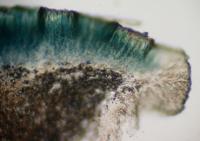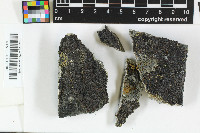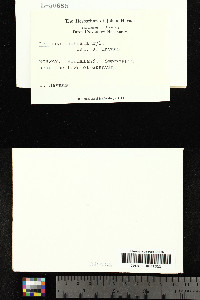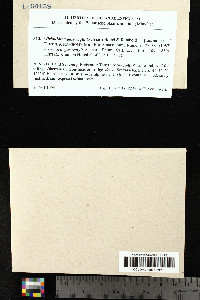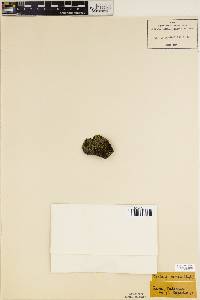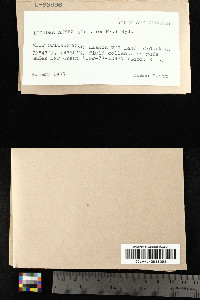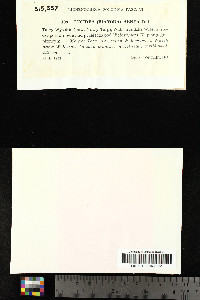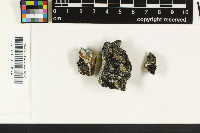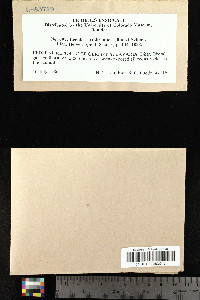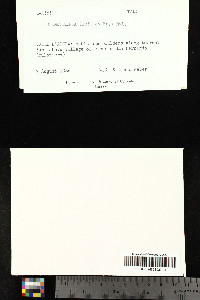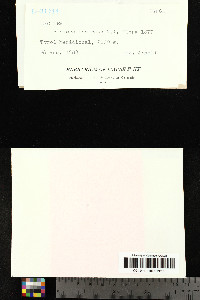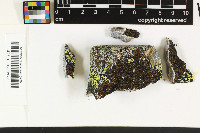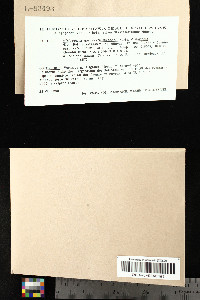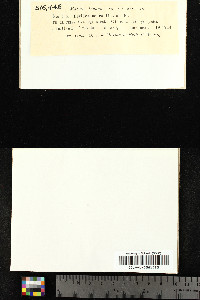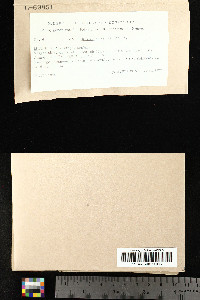
Consortium of Lichen Herbaria
- building a Global Consortium of Bryophytes and Lichens as keystones of cryptobiotic communities -
- Home
- Search
- Images
- Species Checklists
- US States: O-Z >
- US National Parks
- Central America
- South America
- US National Parks
- Southern Subpolar Region
|
|
|
|
Family: Lecanoraceae
[Lecidea aenea (Dufour) Nyl., moreLecidea aenea var. aenea (Dufour) Nyl., Lecidea aenea var. canadensis Lynge, Lecidea aenea var. garovaglii (Schaer.) Jatta, Lecidea aenea var. garovaglioi (Schaer.) Jatta, Lecidea garovaglioi Schaer.] |
Nash, T.H., Ryan, B.D., Gries, C., Bungartz, F., (eds.) 2004. Lichen Flora of the Greater Sonoran Desert Region. Vol 2. Thallus: crustose, areolate, with a simple margin, up to 80 mm in diam., 0.5-1.7 mm thick; prothallus: grayish black, obvious between the areoles areoles: plane to convex, 0.7-1(-2) mm wide surface: brown, smooth, lacking asexual propagules cortex: brown pigmented above, 1235 µm thick, with 4 µm thick hyphae, with an 10-30 µm thick epinecral layer medulla: I-, with hyphae 4-5 µm thick; algal layer: c. 100 µm thick; algal cells: 10(-15) µm in diam. Apothecia: circular, sessile, constricted at base, dispersed to crowded, (0.3-)1-1.5(-5.5) mm in diam. disc: blackish brown to black, plane to convex, dull to subnitid, epruinose margin: blackish brown, distinct to prominent, later +vanishing, subnitid exciple: gray, dark green or olivaceous brown peripherally, hyaline, gray to brownish yellow internally, 120-150(-260) µm wide, with hyphae 2.5-4.5(-6) µm in diam. epihymenium: olive brown to green, 10-15 µm thick hymenium: hyaline below, green or olivaceous above, 50-70 µm tall, I± blue; paraphyses: mostly branched, rarely anastomosing, c. 2 µm thick below, up to 3 µm thick apically; subhymenium: hyaline, 75-120 µm thick hypothecium: hyaline asci: clavate, 40-50 x 12-15 µm, 8-spored ascospores: hyaline, simple, ellipsoid, (9.5-)12-17(-19) x (4-)5-6(-7) µm Pycnidia: immersed conidia: filiform, curved, 18-26 x 0.9-1.2 µm Spot tests: cortex K-, C-, KC-, P-; medulla K+ yellow, C-, KC-, P+ orange Secondary metabolites: miriquidic and stictic acids. Substrate and ecology: siliceous rocks in wind-exposed habitats World distribution: temperate Asia, Europe, and North America Sonoran distribution: confined to the highest mountain peaks of Arizona. Notes: Miriquidica garovaglii can be distinguished from M. mexicana by its large ascospores and the presence of stictic acid. |
|
|
|
Powered by Symbiota



